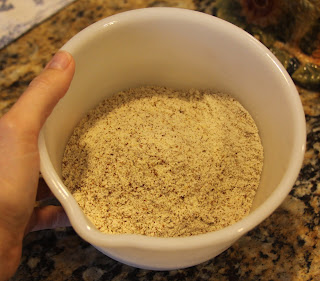I love to use products that I've made myself. No label-reading necessary, because I know exactly what is in them. And, my friends are always willing to be guinea pigs for my homemade concoctions, so I get free feedback from them. If something doesn't work for any or all of them, I can make adjustments until it is perfect!
In this post, I am going to share with you 5 easy steps to make your own chemical-free bathroom products- just imagine, a morning routine that doesn't involve bathing yourself in chemicals and synthetic perfumes!
Step One: Make your own tooth powder!!
Did you know that, historically, fluoride has been added to water supplies as a poison? Yes, fluoride is a toxic chemical that has been forced upon us in drinking water and conventional toothpaste. You can take my word for it, or do your own research (here's a good
article, or
this one). Here's the good news: you can rid your life of fluoride-ridden toothpaste! Make your own tooth powder :) Here's the recipe I use every day:
Tooth Powder
2 T aluminum-free baking soda
1 t fine sea salt
1/2 t cinnamon
1/8 t clove powder-or-5 drops clove essential oil
Mix ingredients well and keep in a sealed container. To use: wet your tooth brush, then dip bristle tips into powder. Brush as usual. This powder will not only clean your teeth but give you fresh breath as well!
Step Two: Make your own deodorant!!
Please read the ingredients label on your stick of conventional deodorant. First off, can you identify all the ingredients? Didn't think so. The worst ingredient in conventional deodorant (in my opinion) is the aluminum. I read an article recently that said 100% of malignant breast tumors contain aluminum... where would the tumors absorb this aluminum? My guess is: conventional deodorant!
Although "natural" deodorants work, I am still not convinced that they are totally safe. Better safe than sorry- make your own!! Here's the recipe I use every day:
Deodorant Paste
3 T coconut oil
2 T shea butter
1 T beeswax
4 T aluminum-free baking soda
essential oils (about 5-10 drops)
Melt your oils over low heat (heat until beeswax is completely melted).
Add baking soda and stir... and stir... and stir until everything is mixed thoroughly. You can take breaks in between stirring. When mixture has cooled and started to solidify, you can add your essential oils (I like orange and ginger). Store in a cleaned deodorant tube or a small pot in your bathroom. This can be spread on or rubbed in with your fingers.
Step Three: Make your own lotion!!
Once again, read your labels! Store-bought lotion is nothing but chemicals with a little oil thrown in. Do you really want to slather chemicals on your body right out of the shower? That doesn't sound too clean to me. Here is a very simple recipe that I use every day (including on my face):
Body Butter
3oz shea butter
3oz cocoa butter
3oz coconut oil
3oz almond or grapeseed oil
essential oils (optional)
Melt solid oils over low heat, then let them cool for 30 minutes.
Add liquid oil and any essential oils for scent.
Chill until mixture starts to solidify.
Whip with a hand mixer until light and fluffy!
You can store this in your bathroom in a sealed container, as long as it doesn't get too hot.
Step Four: Make your own shampoo and conditioner!!
Check out my recent posts on
liquid shampoo and vinegar rinse and
henna bar shampoo!
Store-bought shampoo has lots of chemicals- some for lather, some for shine, some for sensitive scalp, etc. If you just use a homemade, chemical-free shampoo, you will have lather, shine and a healthy scalp, and without all those added chemicals :)
Step Five: Make your own soap!!
This is a big step, but I know you can do it! There are many how-to videos and
instructables online that teach soap-making basics. I have also done a detailed post on making
goat milk soap. If you are not comfortable making your own, just be careful when buying soap at the store. Pick soaps that do not have synthetic scents and chemical additives. Some skin problems, like eczema, are aggravated by harmless-looking ingredients and fragrances.
If this list looks very daunting to you, just take it one step at a time! Try one recipe per week, or two if you're feeling motivated :) You
can rid your life of chemicals and feel good about doing it. Enjoy!









































